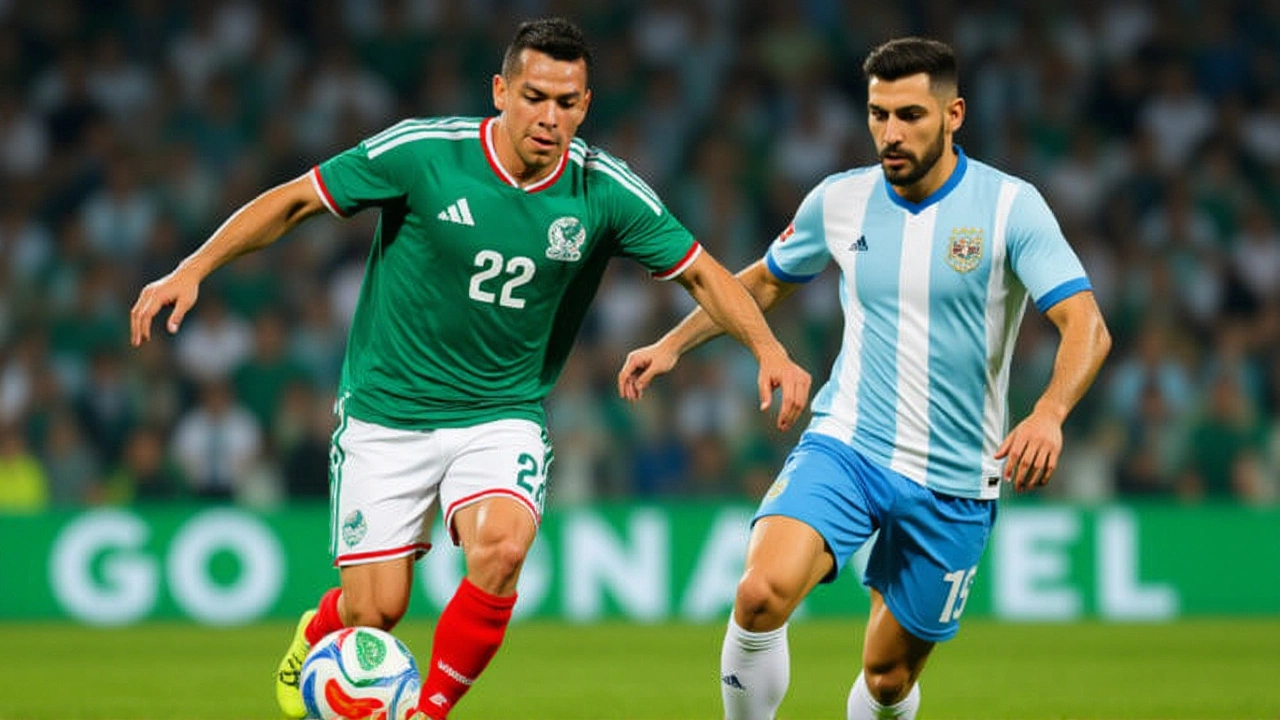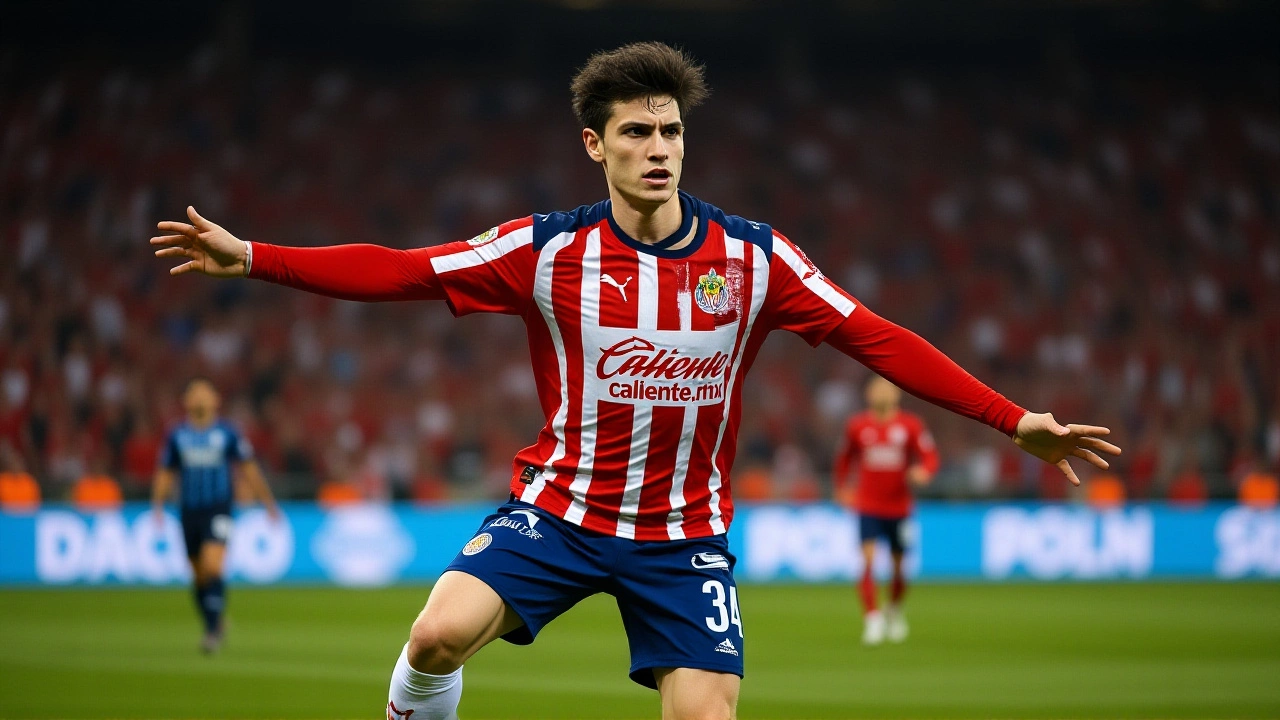
When Paraguay's Men's National Soccer Team defeated Mexico's Men's National Soccer Team 2-1 on November 18, 2025, San Antonio, Texas, it wasn’t just another friendly. It was a wake-up call — loud, unmistakable, and deeply embarrassing for a nation preparing to co-host the 2026 FIFA World Cup. The match, played at an unnamed stadium under a cool Texas night, ended with Antonio Sanabria opening the scoring in the 48th minute, Raúl Jiménez equalizing from the spot just six minutes later, and Damián Bobadilla burying the winner two minutes after that. The final whistle blew at 90'+7'. And suddenly, the pressure on Mexican Football Federation wasn’t just theoretical — it was real, raw, and public.
How It Unfolded: A Match That Exposed Deep Flaws
Paraguay didn’t dominate possession. They didn’t control the tempo. But they capitalized — brutally, efficiently. Sanabria’s goal came after a cross from the right flank, a diving header, and a collision with Mexican goalkeeper Luis Malagón. The referee initially waved play on, but VAR intervened. Broadcasters from Fox Deportes replayed the incident frame by frame: no studs up, no reckless challenge, just two players racing for the ball. "It’s a goal. No doubt," said the commentator. The goal stood. Mexico, rattled, responded with urgency. Jiménez, their veteran striker, stepped up to the penalty spot after a handball in the box. He didn’t miss. "It’s game on," declared the announcer. But then, the unthinkable. Just two minutes later, Bobadilla — a 23-year-old forward with only six international caps — received a through ball, cut inside, and fired low past Malagón. The Mexican defense, already disorganized, collapsed like a house of cards.Why This Loss Hurts More Than Most
This wasn’t a defeat to Brazil or Argentina. This was Paraguay — a team that hasn’t won a World Cup knockout match since 2010. And yet, they outplayed Mexico in key moments. The Mexican Football Federation has spent the last two years touting its World Cup hosting credentials, building stadiums, marketing the event globally. But on the pitch? The team looks lost. The midfield — led by Érick Gutiérrez and Carlos Rodríguez — offered little creativity. The defense, anchored by veteran Héctor Moreno, looked slow to react. Even substitutions failed to spark change. Diego Lainez, once a dazzling winger, was introduced in the 68th minute — too late, too quiet."It’s not just about tactics," said a former Mexican national team assistant coach, speaking anonymously. "It’s about identity. Who are we? Who’s leading? Who’s taking responsibility? Right now, nobody knows. And that’s terrifying when you’re hosting the World Cup."

Reaction: From Panic to Protest
The fallout was immediate. Express News ran the headline: "Mexico continues international slump with loss to Paraguay in San Antonio." FMF State of Mind, a respected fan-driven outlet, published "Alarm bells ring after Mexico loses against Paraguay," citing declining morale and fan distrust. On social media, #ElTriEnCrisis trended in Mexico for over 12 hours. Videos of fans leaving early, chanting for manager Jaime Lozano’s resignation, flooded TikTok and Twitter. Even Fox Deportes, typically loyal, titled their recap: "ANOTHER LESSON FOR 'EL TRI'" — a phrase dripping with disappointment.The timing couldn’t be worse. The 2026 FIFA World Cup begins in June 2026. Mexico’s opening match is scheduled for June 12 in Guadalajara. They’re expected to be among the favorites. But this loss — their third in five international friendlies since September — has shattered that illusion. The team hasn’t won a competitive match since October 2024. Their last clean sheet? Over 18 months ago.
What’s Next? The Clock Is Ticking
The Mexican Football Federation now faces a brutal choice: fire the manager, overhaul the squad, or risk a home World Cup catastrophe. There’s no time for gradual change. The next window is January 2026 — just four months away. If they don’t find cohesion, discipline, and leadership by then, the tournament won’t be a celebration. It’ll be a reckoning.Paraguay, meanwhile, celebrated like they’d won the Cup. Their players embraced on the sideline. Their fans, many of whom had traveled from South America to San Antonio, chanted in unison: "¡Paraguay, Paraguay!" They didn’t just win a game. They exposed a giant.

Background: Mexico’s Decline in Context
Mexico’s struggles aren’t new. They’ve lost to Jamaica, Jamaica, and now Paraguay — all in the last 14 months. Their last major tournament win? The 2019 CONCACAF Gold Cup. Since then, they’ve been eliminated in the Round of 16 at the 2022 World Cup, and failed to qualify for the 2024 Copa América. Their U-23 team barely scraped into the 2024 Olympics. The pipeline is drying up. The golden generation of Hirving Lozano, Jiménez, and Moreno is fading. The next wave — players like Obed Vargas and Fidel Ambríz — haven’t stepped up.Compare that to the U.S. team, which just beat Colombia 3-0 the week before. Or Canada, who won 4-1 over Jamaica. Mexico is no longer the region’s standard-bearer. And with the World Cup on home soil, that’s not just embarrassing — it’s dangerous.
Frequently Asked Questions
How does this loss affect Mexico’s chances at the 2026 World Cup?
This defeat severely undermines Mexico’s confidence heading into the World Cup. With only four months until kickoff, their poor form — three losses in five friendlies since September — suggests they’re not ready to compete with top teams like the U.S., Brazil, or Spain. Fans and analysts now fear they could be eliminated in the group stage on home soil, which would be a historic collapse for a nation that’s reached the Round of 16 in seven straight World Cups.
Who is responsible for Mexico’s current slump?
While manager Jaime Lozano faces the most scrutiny, responsibility lies with the entire federation. Poor youth development, over-reliance on aging stars, and a lack of tactical innovation have all contributed. The Mexican league has become less competitive, and players abroad — like those in Europe — aren’t being integrated effectively into the national setup. The federation’s leadership has been criticized for ignoring warning signs for over two years.
What’s the significance of Paraguay winning in San Antonio?
Paraguay’s victory is symbolic. They’re not a traditional powerhouse, yet they outplayed a co-host nation with far greater resources. It highlights how far Mexico has fallen compared to regional rivals. The fact that Paraguay’s players were largely from domestic leagues or lower-tier European clubs — while Mexico’s squad featured stars from top clubs like Ajax and Atlético Madrid — makes the result even more shocking.
Could this lead to changes in Mexico’s coaching staff?
Yes, pressure is mounting rapidly. While no official decision has been made, sources within the federation suggest a coaching change is likely before January’s next international window. Former Mexico captain Rafael Márquez and ex-Real Madrid assistant José Luis Sierra are already being mentioned as potential replacements. The federation can’t afford to wait — fan anger is growing, and sponsors are watching closely.
How did VAR impact the outcome of the match?
VAR was decisive. It confirmed Antonio Sanabria’s 48th-minute goal after a controversial collision with Luis Malagón. Without VAR, the goal might have been disallowed, potentially altering the match’s momentum. The decision reinforced Paraguay’s belief they could compete physically, and exposed Mexico’s vulnerability in high-pressure moments. It also showed how reliant Mexico has become on referee decisions — a sign of poor composure under pressure.
What does this mean for fans attending the 2026 World Cup in Mexico?
Many fans are now anxious. Ticket sales remain strong, but social media is flooded with doubts. Will the team be worth watching? Will the matches be embarrassing? The fear isn’t just about losing — it’s about the team not representing the country’s pride. If Mexico fails to turn things around by June, the atmosphere in stadiums could turn from celebratory to hostile, especially in cities like Guadalajara and Monterrey.

Write a comment